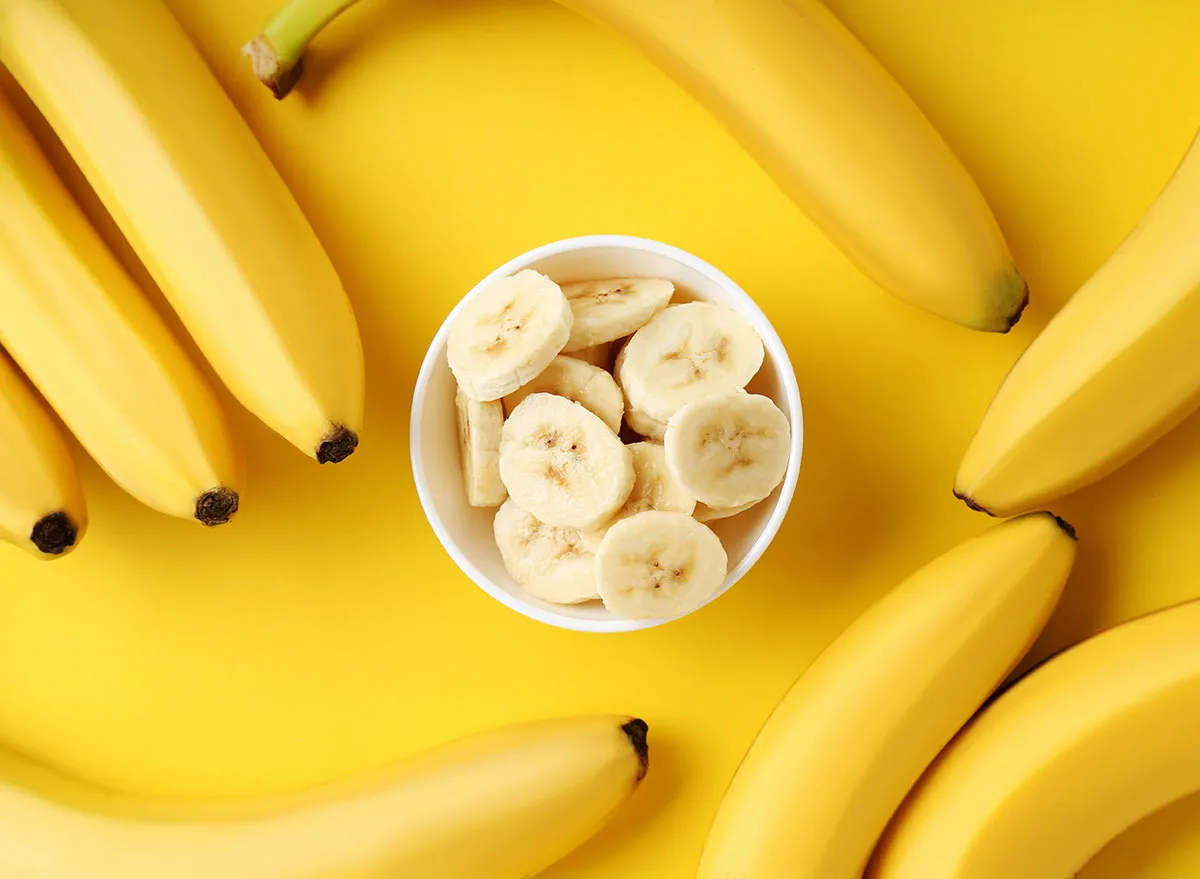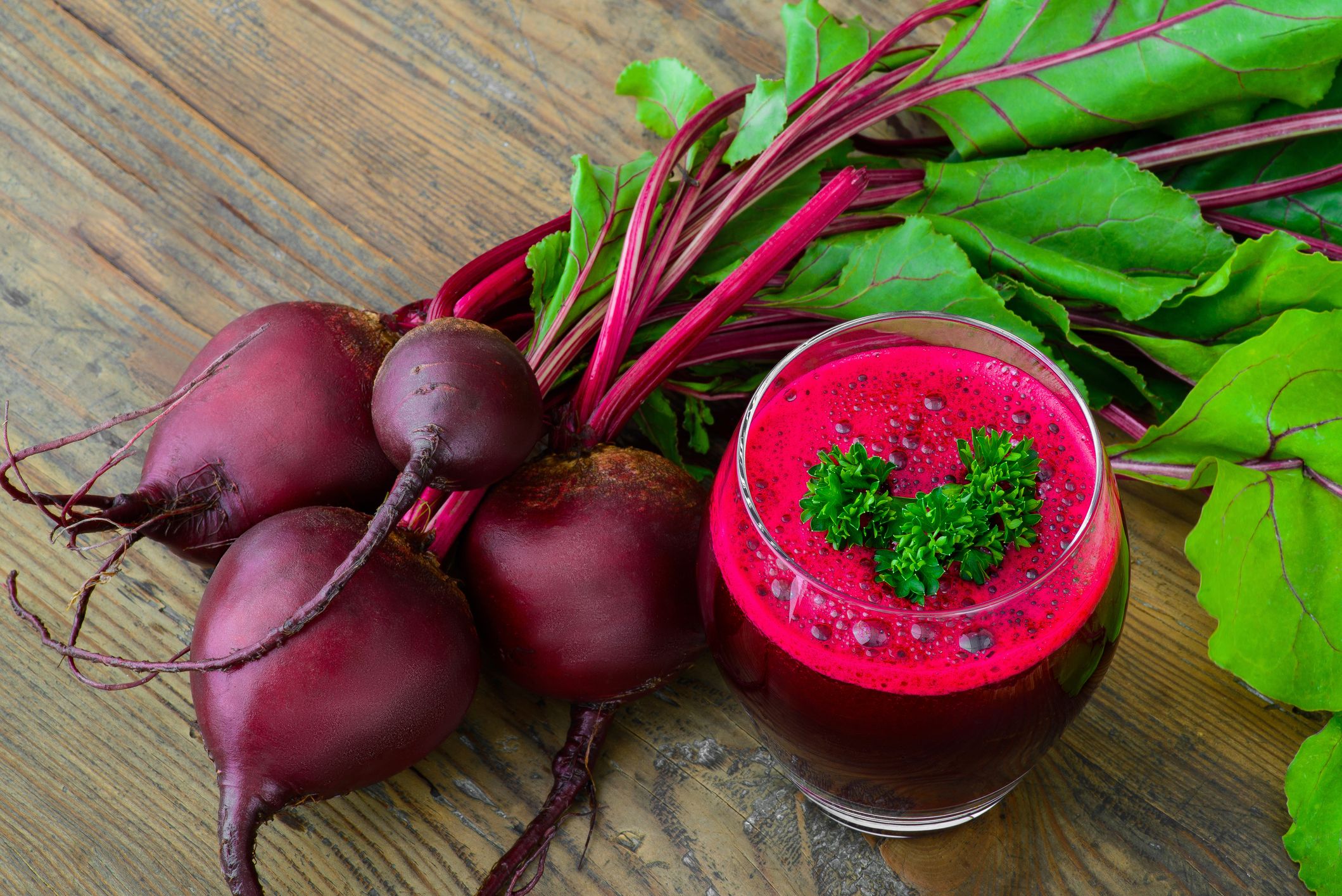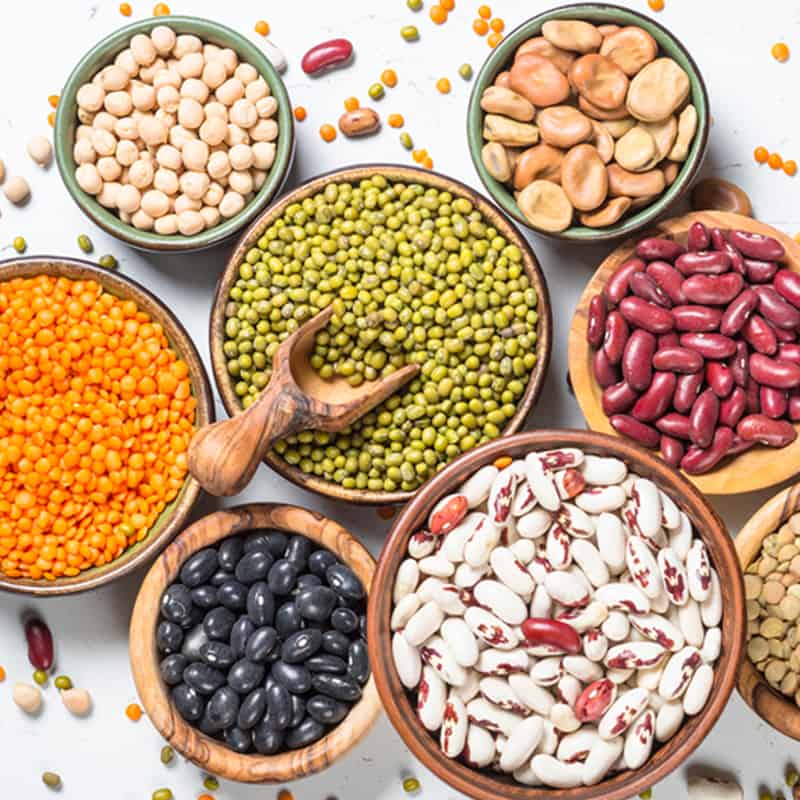The Dietary Approaches to Stop Hypertension (DASH) diet is proven to reduce blood pressure and cholesterol levels and reduce the risk of cardiovascular disease compared to a typical American diet. The DASH diet, also called the DASH eating plan (as it’s more a way of eating than a diet), includes eating fruits and vegetables, low-fat dairy products, whole grains, chicken, fish, beans and nuts. It’s low in red meat, sugar-sweetened beverages and processed foods with added sugar and salt.
Potassium helps lower blood pressure by helping the kidneys flush out excess sodium. Men should consume 3,400 mg of potassium per day, and women should aim for 2,600 mg per day (2,900 mg/day if pregnant; 2,800 mg/day if breastfeeding). Potassium is listed on the Nutrition Facts panel, making it easy to see if you’re getting enough to maintain healthy blood pressure levels. See our list of high-potassium foods.
Calcium and magnesium are also important nutrients for healthy blood pressure, as they help blood vessels relax.
Bananas
One medium banana has 422 mg of sodium-flushing potassium. Mix bananas into oatmeal or top your toast with peanut butter and a banana for breakfast.
Potatoes

One medium white potato has 620 mg of potassium, while one sweet potato has 540 mg of potassium. Make your own french fries by slicing potatoes and roasting them in the oven with a little salt and other spices like pepper, paprika or rosemary. Drizzle them with olive oil for heart-healthy fats. Learn more about what makes potatoes healthy.
Beets
One cup of beets has 440 mg of potassium, while one cup of beet greens has 245 mg of potassium. Studies show that both beets and beet juice can lower blood pressure, due to their high concentration of nitrates, which help improve blood flow (learn more about the health benefits of beets).
Spinach
:max_bytes(150000):strip_icc()/spinach-GettyImages-1135161567-1-2000-af5a3db960f7469faa7d281ae8769156.jpg)
Three cups of raw spinach delivers 475 mg of potassium, and this veggie is super versatile so it’s easy to eat—make a spinach salad, scramble into eggs, throw into a smoothie, or sauté for a side dish. Leafy greens are also high in calcium and magnesium.
Beans and legumes
Beans and legumes are high in potassium and magnesium. One cup of white beans delivers 615 mg of potassium and 89 mg of magnesium. Men should get 420 mg of magnesium per day and women should get 320 mg per day. Just rinse beans if buying them canned to help reduce sodium.
Plain yogurt

Yogurt is naturally high in calcium; choose plain over flavored yogurts (and add your own fruit or a little bit of sweetener for flavor). Go for low-fat varieties most often to limit saturated fat intake. Most men and women should aim for 1,000 mg of calcium per day. Women over the age of 50 should get 1,200 mg per day. One cup of low-fat yogurt has 415 mg of calcium. Mix heart-healthy berries into plain yogurt or swap out sour cream for plain yogurt in tacos or chili.
Other tips for healthy blood pressure
- Cook food at home more often instead of eating out.
- Buy foods labeled as “low sodium,” “reduced sodium” or “no salt added.”
- Buy canned foods less often and opt for fresh and frozen fruits and vegetables most of the time.
- Rinse canned beans and vegetables before eating.
- Read nutrition labels and choose foods with less than 20% Daily Value of sodium per serving.
- Choose fresh meat and seafood more often than processed and packaged meats.
- Buy unsalted savory snacks like nuts.
The Bottom Line
All foods can fit in a healthy diet, even a diet to help lower your blood pressure. Limit the foods on the worst-offenders list, like pizza, sandwiches and burgers, along with foods eaten at restaurants, processed meats, frozen meals and canned soups. The DASH diet is proven to help lower blood pressure. Limit processed foods and choose whole foods most of the time, like fresh or frozen fruits and vegetables, plain whole grains, beans and legumes, low-fat dairy, and low-sodium nuts and nut butters.
Source: https://www.eatingwell.com








